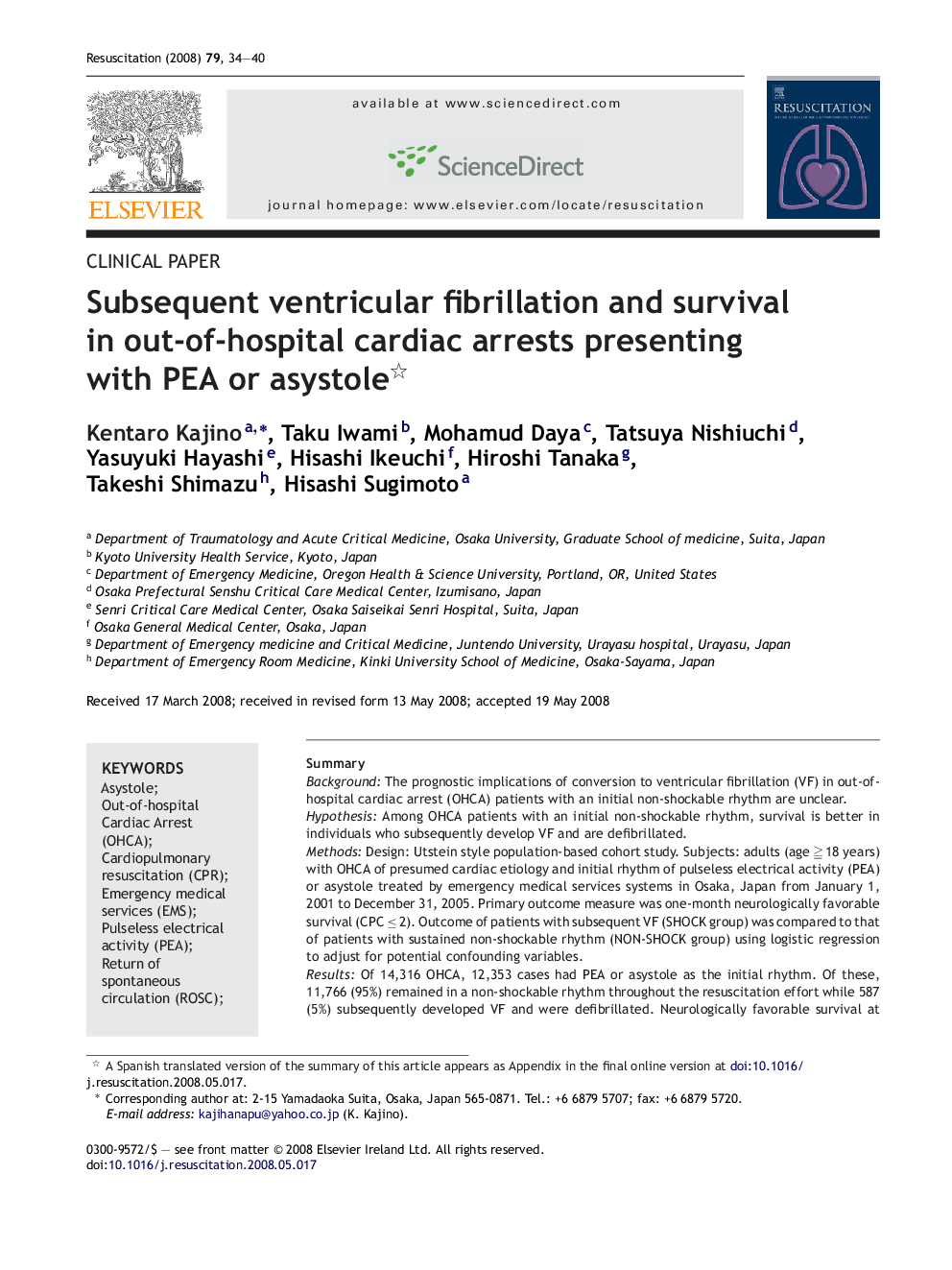| Article ID | Journal | Published Year | Pages | File Type |
|---|---|---|---|---|
| 3009541 | Resuscitation | 2008 | 7 Pages |
SummaryBackgroundThe prognostic implications of conversion to ventricular fibrillation (VF) in out-of-hospital cardiac arrest (OHCA) patients with an initial non-shockable rhythm are unclear.HypothesisAmong OHCA patients with an initial non-shockable rhythm, survival is better in individuals who subsequently develop VF and are defibrillated.MethodsDesign: Utstein style population-based cohort study. Subjects: adults (age ≧ 18 years) with OHCA of presumed cardiac etiology and initial rhythm of pulseless electrical activity (PEA) or asystole treated by emergency medical services systems in Osaka, Japan from January 1, 2001 to December 31, 2005. Primary outcome measure was one-month neurologically favorable survival (CPC ≤ 2). Outcome of patients with subsequent VF (SHOCK group) was compared to that of patients with sustained non-shockable rhythm (NON-SHOCK group) using logistic regression to adjust for potential confounding variables.ResultsOf 14,316 OHCA, 12,353 cases had PEA or asystole as the initial rhythm. Of these, 11,766 (95%) remained in a non-shockable rhythm throughout the resuscitation effort while 587 (5%) subsequently developed VF and were defibrillated. Neurologically favorable survival at one month was significantly better in the SHOCK group (6% versus 1%, p < 0.001). Subsequent VF remained a significant predictor (OR, 4.3; 95% CI, 2.8–6.7) of neurologically favorable survival after adjustment for potential confounders.ConclusionsBased on a large-scaled population-based cohort of OHCA, subsequent VF with defibrillation was associated with better outcomes among patients with an initial non-shockable rhythm.
